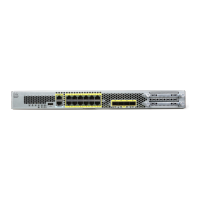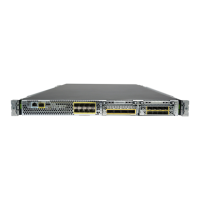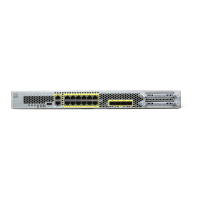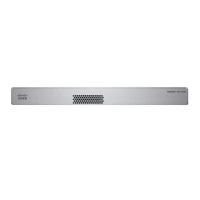9-9
Cisco Security Appliance Command Line Configuration Guide
OL-10088-01
Chapter 9 Configuring IP Routing
Configuring OSPF
This command enters the router configuration mode for this OSPF process.
The process_id is an internally used identifier for this routing process. It can be any positive integer. This
ID does not have to match the ID on any other device; it is for internal use only. You can use a maximum
of two processes.
Step 2 To define the IP addresses on which OSPF runs and to define the area ID for that interface, enter the
following command:
hostname(config-router)# network ip_address mask area area_id
The following example shows how to enable OSPF:
hostname(config)# router ospf 2
hostname(config-router)# network 10.0.0.0 255.0.0.0 area 0
Redistributing Routes Into OSPF
The security appliance can control the redistribution of routes between OSPF routing processes. The
security appliance matches and changes routes according to settings in the redistribute command or by
using a route map. See also the “Generating a Default Route” section on page 9-16 for another use for
route maps.
To redistribute static, connected, RIP, or OSPF routes into an OSPF process, perform the following steps:
Step 1 (Optional) Create a route-map to further define which routes from the specified routing protocol are
redistributed in to the OSPF routing process. See the “Defining Route Maps” section on page 9-6.
Step 2 If you have not already done so, enter the router configuration mode for the OSPF process you want to
redistribute into by entering the following command:
hostname(config)# router ospf process_id
Step 3 To specify the routes you want to redistribute, enter the following command:
hostname(config-router)# redistribute {ospf process_id
[match {internal | external 1 | external 2}] | static | connected | rip}
[metric metric-value] [metric-type {type-1 | type-2}] [tag tag_value] [subnets] [route-map
map_name]
The ospf process_id, static, connected, and rip keywords specify from where you want to redistribute
routes.
You can either use the options in this command to match and set route properties, or you can use a route
map. The tag and subnets options do not have equivalents in the route-map command. If you use both
a route map and options in the redistribute command, then they must match.
The following example shows route redistribution from OSPF process 1 into OSPF process 2 by
matching routes with a metric equal to 1. The security appliance redistributes these routes as external
LSAs with a metric of 5, metric type of Type 1, and a tag equal to 1.
hostname(config)# route-map 1-to-2 permit
hostname(config-route-map)# match metric 1
hostname(config-route-map)# set metric 5
hostname(config-route-map)# set metric-type type-1

